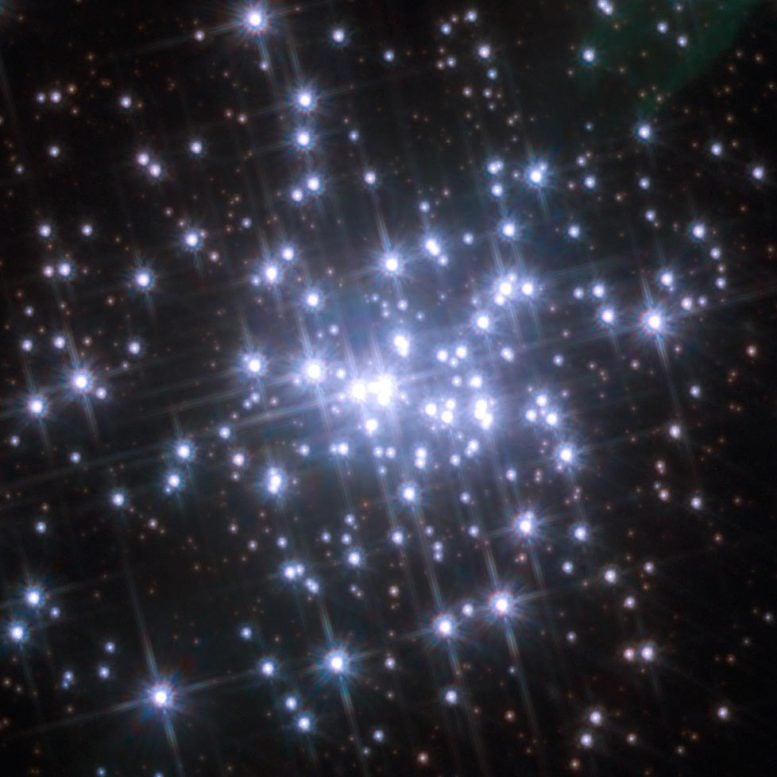Astronomers Discover One of the Most Massive Binary Stars in the Galaxy

NGC 3603-A1 is a pair of giant stars locked in a rapid 3.8-day orbit. Their dynamic relationship provides clues to how massive stars evolve and form black holes.
A team of astronomers combined archival data from the Hubble Space Telescope with fresh observations to obtain precise measurements of the binary star system NGC 3603-A1. One of its stars has a mass about 93 times greater than the Sun, while the other is roughly 70 solar masses. Together, they form one of the most massive binary systems ever identified in the Milky Way.
What makes this system truly extraordinary is the speed of its orbit. The two enormous stars revolve around each other once every 3.8 days. By comparison, during the time it takes Earth to complete a single year around the Sun, these stars complete nearly 100 orbits. Their close proximity and immense size generate powerful interactions that are actively altering both stars.
A discovery from overlooked data
Uncovering this system required years of investigation and hinged on a key observation from an unexpected contributor. In the summer of 2020, while working remotely at Lowell Observatory during the pandemic, Carleton College undergraduate Sarah Bodansky noticed details in older Hubble data that had escaped previous analysis.
“Sarah’s work made it possible to move this project forward. She noticed something that everyone had missed: some of the spectral features doubled when the stars had their greatest motions towards and away from us. Without this discovery, the project would have languished,” says Dr. Phil Massey of Lowell Observatory.

This observation was key because it revealed the binary nature of what had appeared to be a single, fuzzy star. Located in the densely packed star cluster NGC 3603 which is one of the most active star forming regions in our Galaxy, the system could only be resolved using Hubble’s exceptional clarity.
Young stars masquerading as giants
Both stars are so massive and energetic that they mimic Wolf-Rayet stars, which are typically older, dying giants that blast away their outer layers with intense stellar winds. However, the stars in NGC 3603-A1 are actually still young, demonstrating the extreme conditions that can make massive stars appear far more evolved than they actually are.
The interaction between the two stars tells a fascinating story of stellar evolution. The smaller of the pair appears to have stolen mass from its larger companion, causing it to spin faster as a result. This kind of mass transfer is crucial for understanding how massive stars change over time and provides insights into their ultimate fate.
“For the most massive stars, astronomers usually have to rely on models that aren’t very well-constrained to ‘weigh’ the star. But this study focused on a special type of binary system where we can get a more fundamental measurement of its mass,” says Sarah Bodansky from Carleton College.
Massive binary systems like NGC 3603-A1 are the progenitors of binary black holes, which can eventually merge and create gravitational waves that scientists have been detecting since 2015. Understanding these stellar relationships helps astronomers predict where and when such collisions might occur.
Reference: “A New Determination of the Mass of NGC 3603-A1: The Most Massive Binary Known?” by Philip Massey, Sarah Bodansky, Laura R. Penny, Nidia I. Morrell and Kathryn F. Neugent, 25 August 2025, The Astrophysical Journal.
DOI: 10.3847/1538-4357/ade799
Adapted from an article originally published on Universe Today.
Never miss a breakthrough: Join the SciTechDaily newsletter.
Source link

